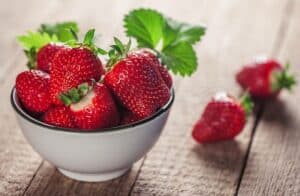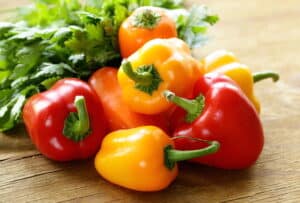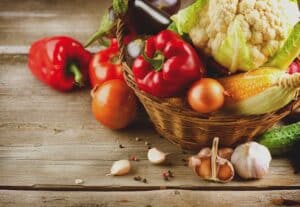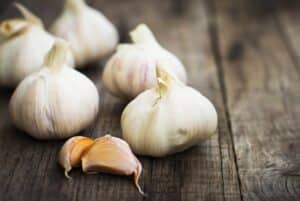Carrot tops, onion skins, orange peels, and even coffee grounds can be put in an outside pile or bin of some sort, then covered with grass, leaves, and brush to decompose into a rich, dirtlike organic material full of nutrients that makes excellent soil fertilizer and is called compost. You can keep adding layers of fruit and vegetable matter, covering with leaves and grass, making the compost bin or pile your main place to discard food waste.
Basically there are four steps to composting:
Choose a composting bin. Available in hardware stores and mail-order catalogs everywhere, composters come in a variety of designs, from simple wooden slatted box, to large tumbler barrels that can be turned easily. Gardening magazines are full of advertisements for composters and offer 800 numbers for further information. Choose your bin carefully. If you live in the country and have a lot of wild animals, look for an animal-resistant variety of composter. If you use compost for your own garden, and it is a large garden, consider a tumbler barrel composter, which can make usable compost in two weeks.
Choose a spot for your compost and a system for getting your compost to the composter. Make sure the compost bin is downwind from your house, and far enough away to keep odors away. You need to be careful not to keep food waste in your kitchen for very long because molds grow very quickly on it, which can be a serious issue for anyone with mold allergies. Keep a colander in your sink, or a bucket with a tightly covered top, to store food waste for no more than a day or two. Make sure not to put animal products in your compost.
The commonly used composting mixture is four parts green compost to two parts brown compost. Green compost consists of food scraps, weeds, grass cuttings, and green trimmings and is high in nitrogen. Brown compost consists of dead leaves, branches, brush, straw, and wood shavings and is high in carbon. Every time you place green compost in the pile, add half as much brown compost on top.
Mix regularly. If you turn the pile once or twice a week the compost will decompose faster and not smell as much.
Once you have compost you can use it to fertilize gardens, trees, and plants. If you don’t use it yourself, there is many a gardener who would be happy to have it. Some farmers may take fresh kitchen scraps. If you live in a city, ask farmers selling at your farmers’ market.
Excerpted from The Green Kitchen Handbook.* Annie Berthold Bond is also the author of Home Enlightenment.*
- Explore VegKitchen’s other Green Kitchen articles, as well as the wealth of kitchen tips in the entire Healthy Vegan Kitchen area.
*This post contains affiliate links. If the product is purchased by linking through this review, VegKitchen receives a modest commission, which helps maintain our site and helps it to continue growing!






Comments
No Comments